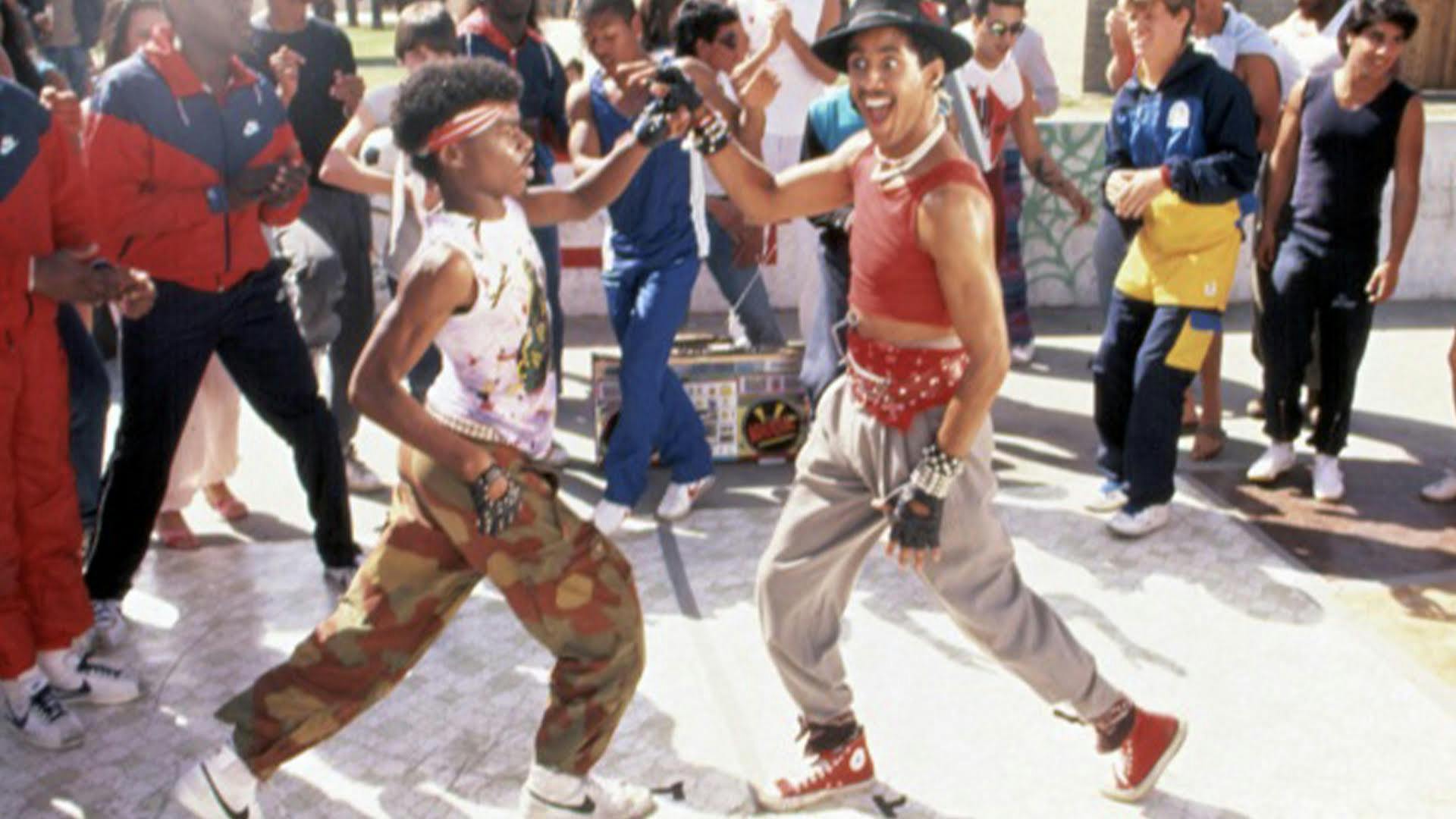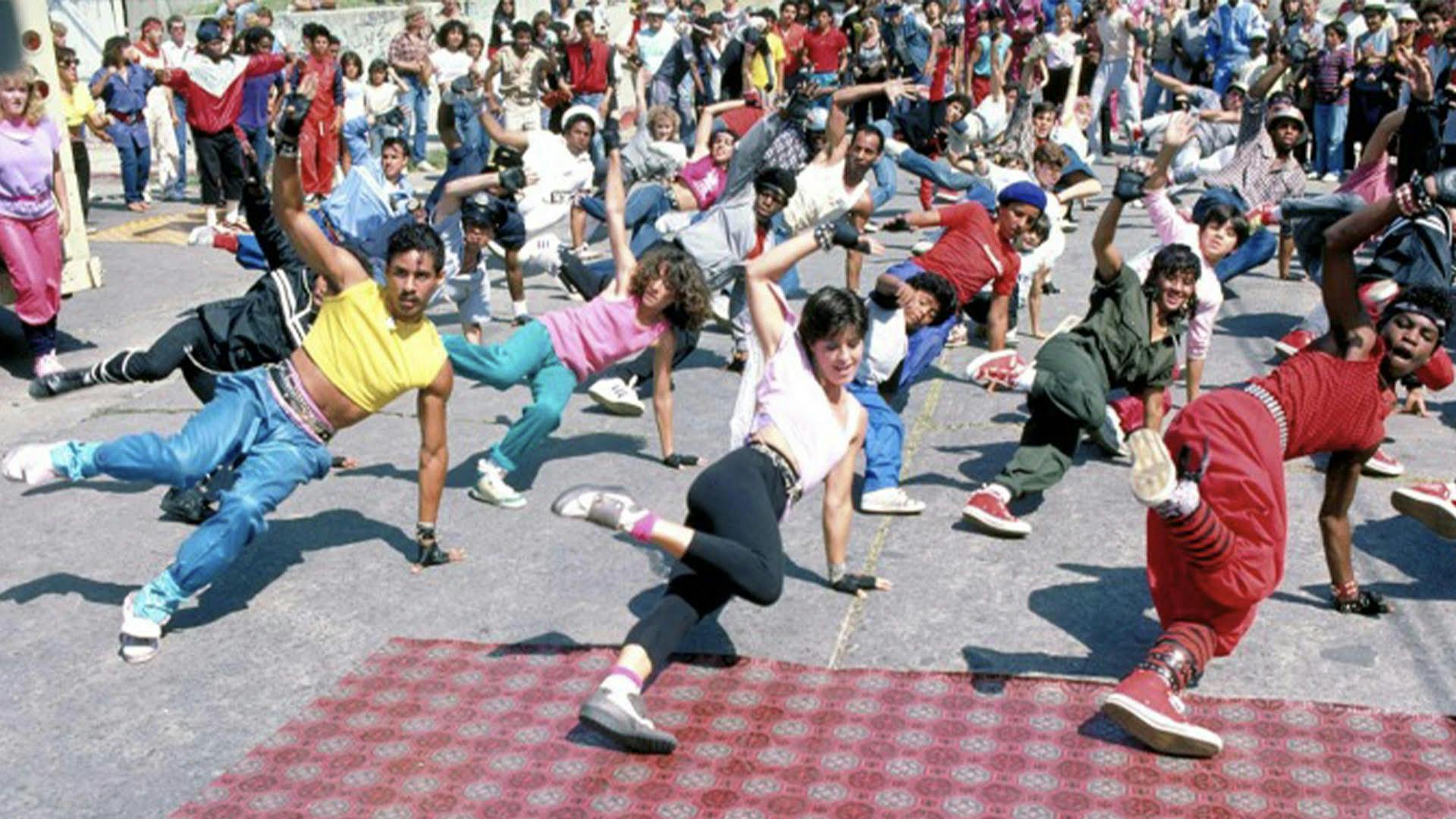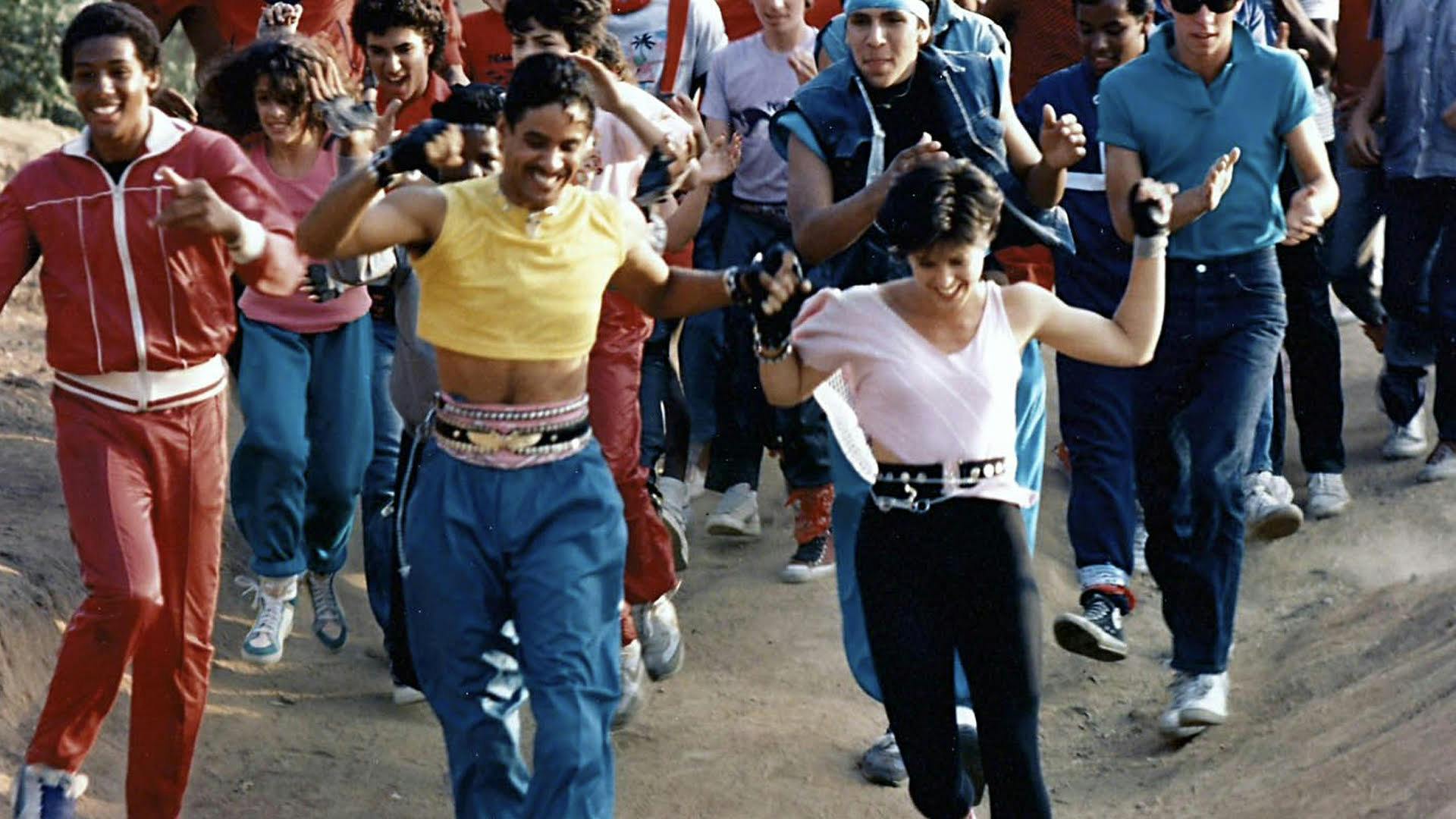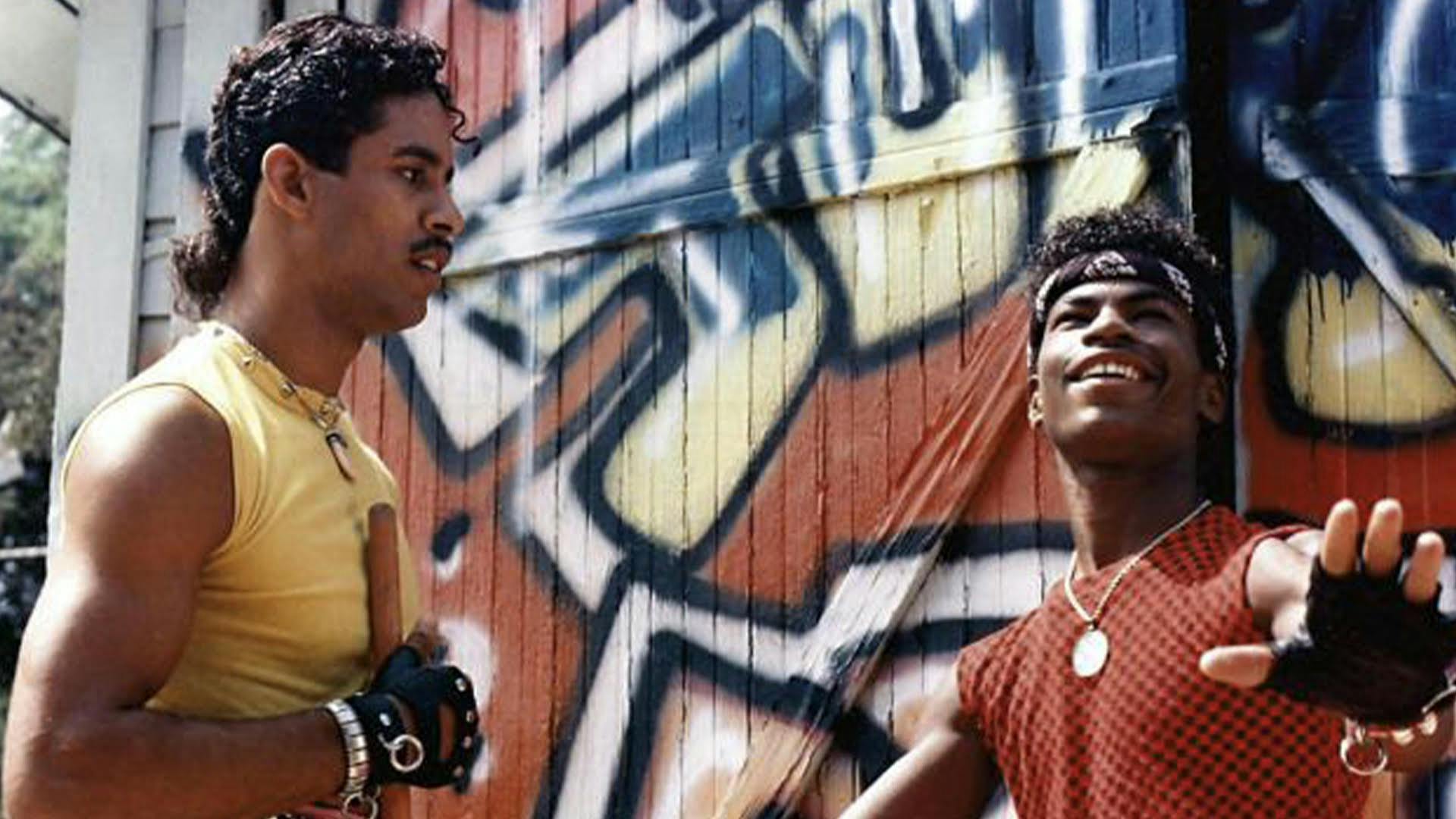
The Oral History of 'Breakin'
The Oral History of 'Breakin'
Published Wed, May 4, 2022 at 12:00 AM EDT
On May 4th, 1984, a low-budget musical film cast with unknown actors set in the world of street dancing hit movie theaters nationwide, making cinematic history as the first scripted movie about the art of breaking.
Capitalizing on the youth movement craze, the powers that be used a mix of trained actors and young people authentically creating the culture (including a local emcee named Ice-T) to help tell the story of a young classically-trained jazz dancer who befriends two street dancers and helps them win a dance competition.
While some still see Breakin’ as a corny Hollywood interpretation, it beat New York counterpart, Beat Street, to theaters, and surpassed Sixteen Candles in ticket sales during its weekend debut. A Fred Astaire-inspired broom dance performed by Michael “Boogaloo Shrimp,” the steaming screen presence of now-deceased dancer/choreographer Shabba Doo, the funky soundtrack, and the film’s iconic place in Hip-Hop history will long be remembered.
The origins
MICHAEL “Boogaloo Shrimp” CHAMBERS [actor/dancer who played “Turbo”]
In 1981 and '82, the Radio [club] was still underground. It was a place I went to dance. In 1983, Shabba Doo (Adolfo Quiñones) got the call that there was going to be a Lionel Richie video. I believe he helped with choreography, too. He brought us in the audition and once we danced, they knew they had something new. I was cast as one of the dancers in the video and then we got asked to be on Lionel Richie's “All Night Long” tour. If you look at the “All Night Long” video, it's the cast of Breakin'—me, Shabba Doo, you got Ana Sanchez, Electro Rock, everybody's in there.
BRUNO FALCON AKA: POP N’ TACO: [actor/dancer who played Electro Rock 1]
Before Breakin’, I had danced in the movie DC Cab, dancing on a set of the White House with Irene Cara. I knew the other dancers in Breakin'—Popin’ Pete, they called him ‘Pistol Pete’, from Electric Boogaloos. He trained me when I was very young, at Polytechnic High School. He got the part as my sidekick. Then Ana "Lollipop" Sánchez got the other part and we became Electro Rock—the rivals. I had never had lines in a production before, plus I was really bashful. They told me just play the opposite of my character, so I went in and did it. “Hey punk! Are you back for more, fool?”
CRASE [graffiti writer/extra]
In 1983, I was 16 and sent from the Bronx to stay with a family friend in LA to keep me out of trouble. I heard this place Radio Club had a younger crowd because they didn’t have a liquor license. The Radio was older teenagers and adults. There was no sign outside. You just had to know. One Friday night in 1984 I was hanging with the Shake City Rockers. I was known as LEFTY then. Someone pointed me out to Ice-T as being someone who was good at graffiti. Ice-T said, "Listen, there's going to be a casting on Monday, around 3:30 right off of Hollywood and Vine. If you want to come down, ask for me, I’ll get you inside." I took the bus there right after school. Ice-T introduced everyone and as they were auditioning B-boys someone handed me a piece of plywood and said, "Show us what you got." I took a few cans, did a fast throw-up, made sure it was nice and shaded, and they said, "Thank you," and then I left. A week later someone from Cannon Films called to say I got the part of, "Graffiti writer."
LUCINDA DICKEY [actor/dancer who played Kelly, aka: ‘Special K’]
I had moved out to Los Angeles from Kansas to be a professional dancer. I got a scholarship with Dupree Dance Academy and Grease 2 came out of that. It was my very first job and I decided that I didn’t want to be just a dancer I wanted to be an actress. I wanted to be more of a Michele Pfeiffer, so I took reading classes. I did whatever jobs I could get—the Emmys, Solid Gold. As I finished filming Ninja III: The Domination they started casting Breakin' (Cannon Films—the same film company). I knew Jaime Rogers, the choreographer, but they had someone else in mind for the film at first. So I got together with my friend Billy Gibson and we made up routines for the audition. I had learned ballet, tap, jazz, but it was not the kind of jazz you do in Los Angeles. In that sense, I was very much like the character Kelly. I did the audition. I threw in my gymnastics because that was always my go-to. I did some aerials and flip-flops.

MICHAEL CHAMBERS: After the Lionel Richie tour, Shabba Doo's agent came backstage at Lionel Richie's concert in LA and said, " I'd love to represent you." After we got back from tour, we danced in a video for Norma Kamali, the fashion designer, who was trying to come out with a video that she could debut in the malls to help her fashion line. It didn’t go anywhere but they paid us and edited Chaka Khan into the video. It got a lot of airplay in the shopping malls. People started recognizing me. I was a little ghetto superstar. And word got out that the writer for the movie Breakin', David Zito, told me that they went out to the neighborhoods, to the clubs to find the best of the best, and people kept telling him ‘you got to check out this guy, Boogaloo Shrimp.’ They came to see me in a dance battle at Big John's Hall in Carson, against one of the dancers from this rap group called the Booya Tribe. It was a Samoan group. I was 14. There was a lot of tension. People were trying to watch everybody's back because back then, there was the Bloods and the Crips and all this other stuff that had nothing to do with dance. the best thing about that battle is, I won the respect of the Samoans.
Adolfo got the call to come in to read for the part of Ozone, so I went with him to try out for Turbo, not knowing what a cattle call it would be. Their casting call brought in everybody. I danced until my Gheri Curl grease went dry. Then in second round callbacks, they wanted me and Shabba Doo to read lines together—no dancing. We already had chemistry because of the Lionel Richie tour, so after we read and they said, “we have our Ozone and Turbo!” everyone went bananas.
CHRIS MACDONALD [actor who played ‘James,’ Kelly’s agent]
Joel Silberg called me in. We sat down we chatted. He didn’t know much about this street dancing world. I told him I didn’t either and he said that’s perfect because you’ll be playing the manager of this girl who’s got classical dance training. I asked ‘who’s the girl?’ When he said ‘Lucinda Dickey’ I said fantastic, I had just worked with her on Grease 2.
LUCINDA DICKEY: In the beginning it was very intimidating because Shabba Doo and Shrimp were so talented and in that era, there were street dancers on Hollywood Boulevard, it’s not like I hadn’t seen that, but I just had never tried any of it. We went right into rehearsals, ready or not.
BRUNO FALCON: The Venice Beach scene was cool. Jean-Claude Van Damme was an extra. I shook his hand and didn’t know him, but I remember he didn’t speak English.
CRASE: The first actual project was to do the Breakin' piece. I brought a sketch of the title to Cannon’s offices in Hollywood. Then we went to the location in East LA, where I would paint the logo on the side of a liquor store. I looked like a New York B-boy, not Chicano, so my presence in the neighborhood got attention. I had my friend Rueben from New York with me and Ricky from Shake City Rockers. After I painted that day, they came up with the idea for us to paint the Radio. Somebody from Cannon picked me up at 8 am and brought me there. When we got there, they said to just do whatever you want on the wall—not on the stage. When I started to paint, someone said there was a contractual dispute and the owners or Radio was not allowing the film company to use the name. But I had already painted the words ‘Radio Club.’ So I went over ‘Club’ with ‘Tron.’ I asked if I could bring somebody else in to finish and they said sure, so I asked my friend GRAFF.
GRAFF [graffiti writer/extra]: I was part of the Shake City Rockers, which started in ‘81. We had a lot of DJs and MCs from New York in our crew. Through them we met Evil-E, Ice-T’s DJ. We all went to the Radio Club. Ice-T wasn’t famous yet. He was local. We used to hang at his apartment in Hollywood, by the 101 Freeway, near Gower and Hollywood Boulevard. The graffiti at the Radio Club was downstairs—everybody tagged the basement. I danced and auditioned for the movie but didn’t get in. But my buddy CRASE got to do the graffiti because he had his black book when he met David Zito. Then CRASE asked me to help him. That was Craze's outline. And me and another guy from my crew, Speedy T, helped out. I’m in the movie as an extra, too—sitting on the speaker on the stage.
CRASE: After I did another piece, they asked me if I wanted to be an extra on the set. I said, "Oh, sure." So, there are a few scenes, like in the club scenes you will see me on the stage on the right-hand side. I’m in one of the trailers, where you see Shabba Doo dancing and I'm right behind Ice-T painting on the wall. I also wound up getting into the beach scene, as well.
LUCINDA DICKEY: I was bruised head to toe from learning the windmills. I never really mastered them, though I tried.
DROP YOUR EMAIL
TO STAY IN THE KNOW


'BREAKIN’ VS. 'BEAT STREET'
MICHAEL CHAMBERS: This was LA’s version of Flashdance. People had seen that and the documentary Breakin and Entering, and Wildstyle. Now this was going to be a bonafide movie about street dancing. I was honored to get this role but I also realized the fun and games would now stop. I felt a responsibility to do my job, for everybody I had been influenced by, everybody who was incarcerated or who didn’t get their faces on a screen. I had to really put it down for my family, my friends, and everything we stood for. I learned by watching the Electric Boogaloos on Soul Train but I knew the hip hop elements were rapping, graffiti, and popping all styles. So, I was in the lab. I was practicing with Mr. Freeze and with other break dancers that were from New York, learning all I could.
CHRIS MACDONALD: We shot it like in 4.5 weeks or something. They wanted to get it out quickly. It was right at the beginning of street dancing and hip-hop and stuff, which was huge. The whole set was really run by the late and great Shabba Doo. He was a great choreographer. And Michael Chambers, little Boogaloo Shrimp, killed me. He was so young and so fricking talented.
MICHAEL HOLMAN [ASSOCIATE PRODUCER/CHOREOGRAPHER/2ND UNIT DIRECTOR OF BEAT STREET]: We heard about Breakin being in production. My New York City Breakers would go on the road and perform around the world. As I recall, we were in LA taping a performance on Soul Train around ’83. We were hearing it was already in production. We were in a neck and neck competition about which would come out first. I wrote some scenes and was a talent wrangler and associate producer, helping Harry Belafonte with information about the Hip Hop scene. We met Boogaloo Shrimp and some of the poppers and lockers of Los Angeles and the early break dancers. We didn’t know much about Breakin’ until after it came out. It certainly beat us to the theater which was really upsetting at the time. Hip Hop is a New York thing so we should have been the first ones out. Yoram Globus and Menaham Golan—the producers— moved fast and got it out before we did. It was only by a couple of months but there was a lot of consternation around that.

I was approached by the producers or an intermediary who asked the NYC Breakers to be in Breakin and we were like ‘no way, we’re doing our own thing.’
Even though Beat Street came out months after, I believe the way it was distributed, it had a greater impact culturally. Breakin didn’t really have the concrete hip hop message that Beat Street did even though both films could have been better. Both suffered from having Hollywood forces that were ignorant to the culture at the street level. It was understood that this is a New York thing. A film coming out of LA couldn’t compete.


AFTERWARD
BRUNO FALCON: Me, Shabba Doo, Ana, Shrimp, and Pistol went to see it at Lakewood Center Mall, on Del Amo and Lakewood in Long Beach, all dressed like the part. We’re sitting in the back in our costumes. The movie finishes, the lights come on everybody turns back and looked at us. ‘Oh my God, that’s them!’ and they were chasing us outside asking for autographs. I was so excited! ‘Oh my god this is what it feels like to be semi-famous.’
CRASE: I went back to New York to finish high school and saw Breakin’ in a Bronx theater with my family.
GRAFF: When the credits go up, it says ‘Aaron Quickdraw Ferguson,’ because I was known as Quickdraw. After the movie came out, people would say to me, "Oh, you the graffiti one." That’s how my name became GRAFF ONE.
CHRIS MACDONALD: It was a joyous experience. I saw it all together for the first time at the premiere and I thought it was full of life and electricity and fricking crazy dance moves and the big stand-off in the end, was really intense. I wasn’t available to do number two I was working on something else.
MICHAEL CHAMBERS: I went right into filming production for Breakin' in ’84 after touring with Lionel Richie and immediately afterward did Breakin' 2: Electric Boogaloo, which was '85.
BRUNO FALCON: I met Toni Basil at the Breakin’ premiere. She walked up to me and told me I had potential to become a good actor, and I said thank you. She told me to see a film called Carmen, about flamenco. After that I moved in with her.
LUCINDA DICKEY: I did finally succeed in doing windmills after the filming, we went on a promotional tour with Poppin’ Pete and Pablo to Hong Kong, Japan, Australia, Mexico and we were performing at nightclubs and that’s when I did windmills, but nobody saw them.
BRUNO FALCON: Breakin’ 2 didn’t turn out the way I wanted it, but the miracles thing was a nice gesture; but it kind of ventured off as a little too flamboyant in the street world. We were wearing fancy clothes and fancy colors, so it took it out of the street and changed the vibe. Overall it was a fun life experience. I had met Michael Jackson in 1983 so I was working with him as a choreographer behind the scenes for the next 20 years.
LUCINDA DICKEY: My star faded a long time ago, but it was really by choice. I did one other film but once I had children I decided to stay home and raise my kids. Oh my God—in the ‘80s, I got stopped all the time. For a girl from Kansas moving out to LA to become a professional dancer, and getting a starring role in a dance film, it doesn’t get better than that. I do still hear the people that are fans, they are cult classics now.
BRUNO FALCON: Right after the first film I started getting a ton of commercials, they recognized me and said, “you’re that guy in that film Breakin’.” I did a Panasonic commercial where I played a robot and then we got Bill & Ted’s Bogus Journey, where I played a robotic Keanu Reeves.
MICHAEL HOLMAN: I don’t remember actually seeing the film until a few years later. I resisted seeing it. I was from California—I came to NY in ’78—and I knew the poppers and lockers and electric boogaloo that came from CA and pre-dated breaking. I was a high school kid in ’72 when those dances were popular. I got the best of both worlds.
MICHAEL CHAMBERS: When we went to the Cannes Film Festival, Harry Belafonte brought the Beat Street dancers, but it was all respectful because we already knew Powerful Pecs, Mr. Wiggles, Normski and a lot of the New York guys from touring. Some people were like, ‘damn, the Beat Street kids and LA kids are together.’ All that rivaling was all a propaganda machine, at the end of the day.



